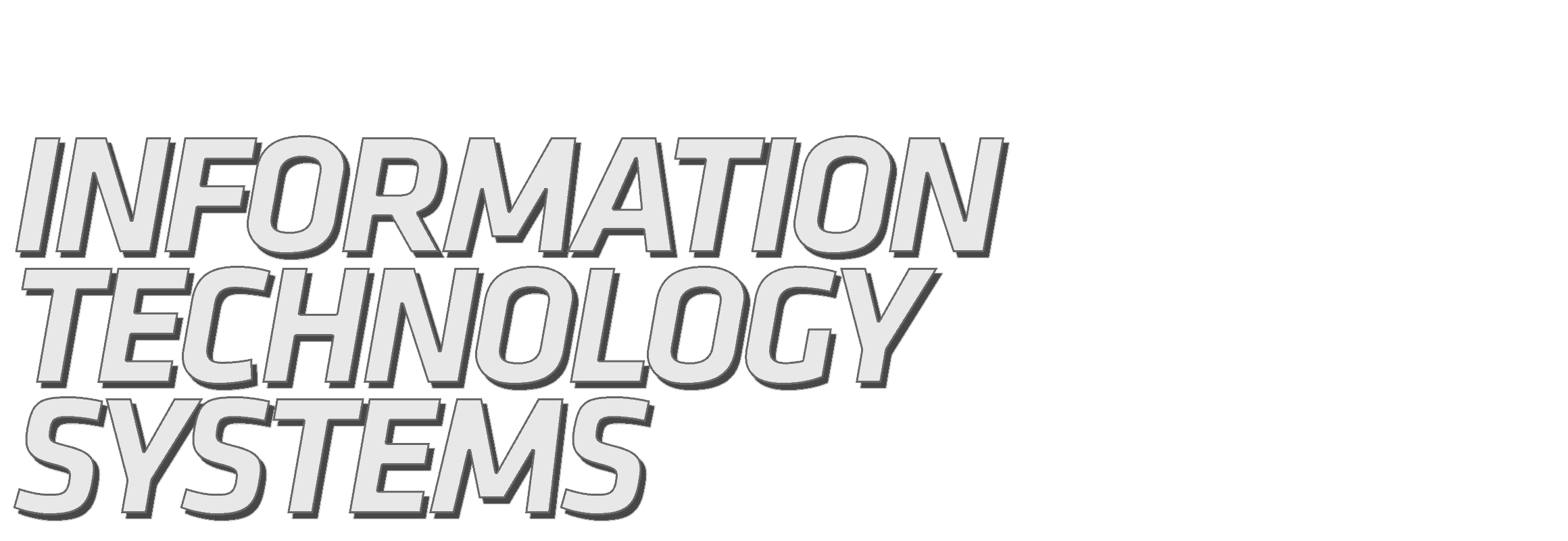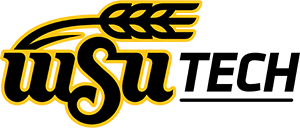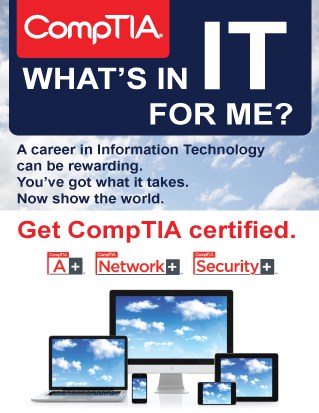
Information Technology Systems Program Features
Information Technology Systems and IT Essentials prepares students to enter the rapidly advancing field of advanced computing technologies. The coursework provides the foundational knowledge and skills necessary to complete CompTIA (Computing Technology Industry Association) Certifications in Computer Technology A+, Networking Technology N+ and Information Technology Security S+.
The CompTIA A+ certification is the starting point for a career in IT.
In order to receive the CompTIA A+ certification, you must pass two exams. The exams cover maintenance of PCs, mobile devices, laptops, operating systems and printers.
CompTIA A+ 220-901 covers the fundamentals of computer technology, installation and configuration of PCs, laptops and related hardware, and basic networking.
CompTIA A+ 220-902 covers the skills required to install and configure PC operating systems, as well as configuring common features (e.g. network connectivity and email) for mobile operating systems Android and Apple iOS.
As an added benefit, students also get to keep the computers they work on during the course.
The WSU Tech Computer Support Specialist program is aligned with the National Center for Education Statistics CIP code 11.1006: Computer Support Specialist prepares individuals to provide technical assistance, support, and advice to computer users to help troubleshoot software and hardware problems. Includes instruction in computer concepts, information systems, networking, operating systems, computer hardware, the Internet, software applications, help desk concepts and problem solving, and principles of customer service.
The WSU Tech Computer Support Specialist with Emphasis in Cyber Security program is aligned with the National Center for Education Statistics CIP code 11.1006: Computer Support Specialist prepares individuals to provide technical assistance, support, and advice to computer users to help troubleshoot software and hardware problems. Includes instruction in computer concepts, information systems, networking, operating systems, computer hardware, the Internet, software applications, help desk concepts and problem solving, and principles of customer service.
Why CompTIA A+?
- Required for Dell, Intel and Lenovo service techs
- Recognized by U.S. Dept. of Defense
- An ANSI accredited Certifier – 0731
- Vendor-neutral
- Held by 900,000 IT professionals
Jobs that use CompTIA A+
- Technical support specialist
- Field service technician
- IT support technician
- IT support administrator
- IT support specialist
Degree and Certificate Options
New Courses
Accreditation
WSU Tech is accredited by the Higher Learning Commission.
The Higher Learning Commission
230 South LaSalle Street, Suite 7-500 • Chicago, IL 60604
https://www.hlcommission.org/ • 800.621.7440
Students interested in this program are eligible to apply for federal financial aid.
Why CompTIA A+?
- Required for Dell, Intel and Lenovo service techs
- Recognized by U.S. Dept. of Defense
- An ANSI accredited Certifier – 0731
- Vendor-neutral
- Held by 900,000 IT professionals




 ] Weather Update: WSU Tech campuses remain open Friday, January 10th. Please use caution on sidewalks and parking lots.
] Weather Update: WSU Tech campuses remain open Friday, January 10th. Please use caution on sidewalks and parking lots.  ] Ready to enroll? Call us today or visit wsutech.edu/contact. Stay safe and stay warm!
] Ready to enroll? Call us today or visit wsutech.edu/contact. Stay safe and stay warm!